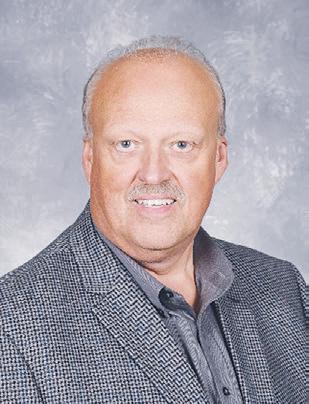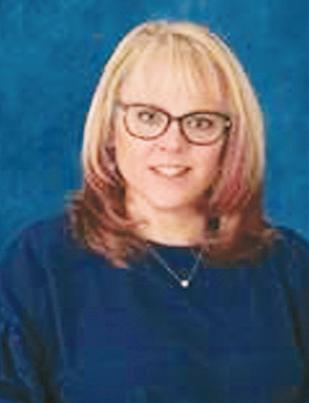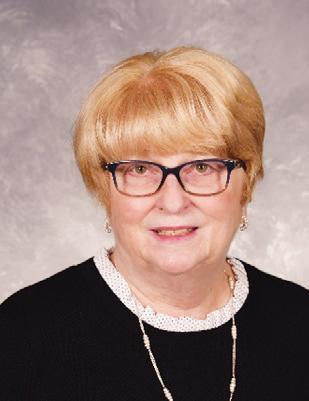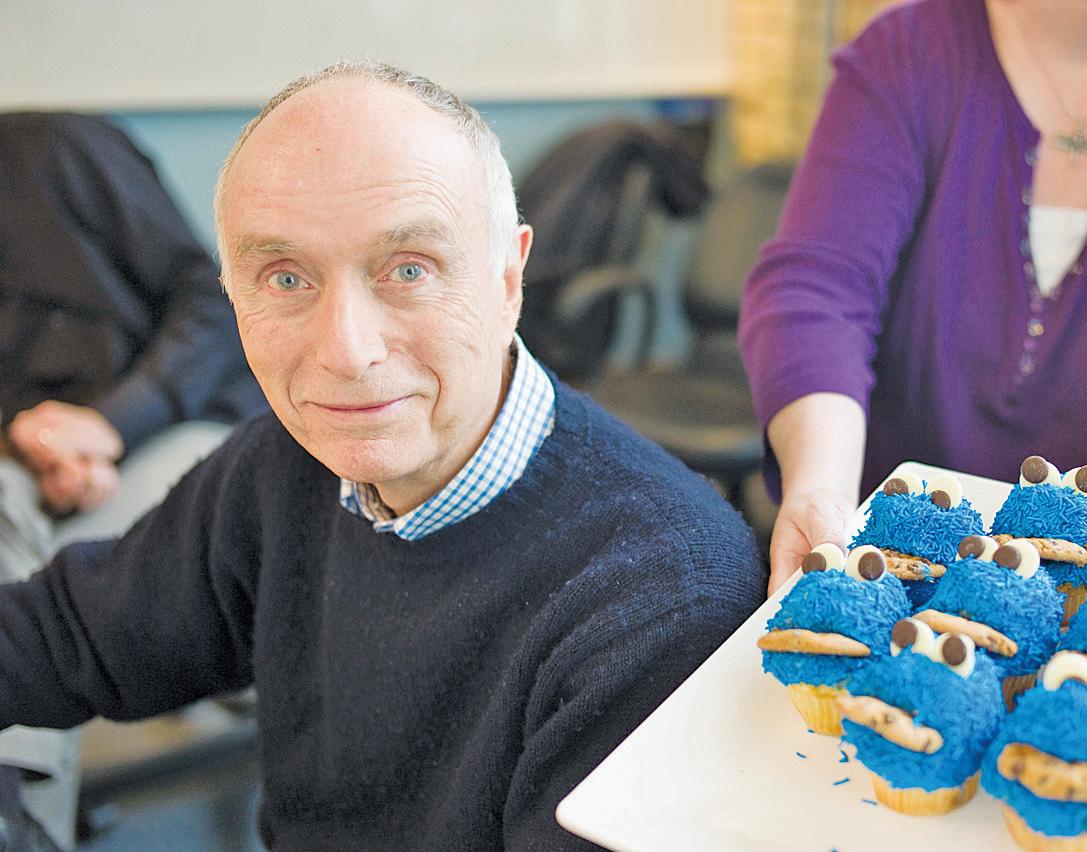
4 minute read
Changing roles on JVS board
PITTSFIELD TWP. — Rex Engle has been chosen to serve as president of the Lorain County JVS Board of Education for 2023.

Engle represents the Amherst Schools on the board.
He plans to “share the great success of the institution,” Engle said in a written statement.
“I want to continue to focus on making improvements to the building to update for safety and have the latest learning trends in place so the students are workforce ready upon graduation,” he said.
dren’s playground.
“I think it’s going to be more geared toward seniors and adults as a fitness area. That’s the plan now. It could change,” he said.
Costilow said he plans to include the $80,000 balance of Nordson’s financial gift for depot renovations in the full 2023 budget, which Council must approve by March.
Nordson Depot was built in 1905 by the Lakeshore and Southern Michigan
Central Railway and service passenger trains until 1963, according to a history kept by Nordson Corporation. The company purchased the depot in 1969, and over the intervening years allowed nonprofits and civic groups to meet in the building. Generations of Amherst school children have memories of going there for Santa’s “secret shop” to buy gifts for their parents.
Keystone representative Deborah Melda has been selected as vice president for the year.
JoAnna Timura has been named to replace North Ridgeville representative Steve Ali on the JVS board.


Timura, an educator of 22 years who now teaches kindergarten at Saint Mary’s of Avon, said she is excited to be a part of the board.
“I hope to work hard to support every student on their path at LCJVS. This school has amazing opportunities for students, and it amazes me how the students come out after graduation and are so prepared for their future,” she said.
CENTURY FROM A1 interview.
“Sesame Street” changed television forever. It not only taught basic math and literacy skills, but also compassion and equality, and has been celebrated for putting Black, white and Hispanic children on the screen together.
It also introduced a generation to Jim Henson’s Muppets, including Big Bird, Cookie Monster, Bert and Ernie, Count Von Count and in later years Elmo and Abby Cadabby.
Today, “Sesame Street” is broadcast in more than 150 countries, reaching about 120 million children.
Letters
Letters to the editor should be:
• Written to the editor. We do not allow open letters or those to specific residents, politicians, or groups.
• Concise. There is a limit of 350 words on letters.
• Polite. Letters that use crude language or show poor taste will be rejected.
• Opinions. We reserve space for letters that share a unique perspective. Press releases are not letters and will be considered for publication in other parts of the paper.
• Free of advertising, product or service endorsements or complaints, poetry, language that could raise legal problems, or claims that are measurably false.

• Signed. Include your name, address, and daytime telephone number for our records. Up to two signatures.
• The deadline to submit letters is 10 a.m. each Tuesday. They are used on a space-available basis. We reserve the right to edit any submission for length, grammar, spelling, and clarity, or to reject any submission.
Morrisett was co-founder of the Children’s Television Workshop, the nonprofit organization that produces the beloved children’s educational series and is now known as Sesame Workshop.
He spent 30 years as its chairman, after which he was named lifetime honorary trustee.

In 1971, Morrisett received an honorary doctor of humane letters degree from Oberlin College for his pioneering work in educational programming.
He became an Oberlin College trustee the following year and served on the board until 1989, including a stint as chairman from 1975 to 1981.
Retiring from the board, Morrisett warned fellow trustees of a “clear decline in real dollars backing each student” in the college’s endowment, according to Chronicle-Telegram archives.
He also told the board it needed to help the Oberlin community learn from its own racial, ethnic and religious differences, and urged the board, administration and faculty to pursue “productive relations” with each other.
A 2014 entry in Oberlin College’s alumni magazine tracked Lloyd and wife Mary’s relocation to a continuing care residence in San Diego, where they could live close to their daughter in Oakland.
While making the trek west, the couple lost many of their possessions when their moving van caught fire.
Asked about Morrisett’s legacy and cultural contributions, Oberlin College spokeswoman Andrea Simakis did not provide a comment.
Excitedly waving at a wall covered with Liu’s paintings and sketches, he said they were gifts from the family of Shih-Yen “Sam” Wu.
Several generations of the family attended Oberlin College, he said. Handwritten letters between Liu and Wu are also on display.
The final portion of the exhibit features reform era paintings from the 1980s into the 2000s.
They are generally much larger and colorful. Some use Western advertising motifs to critique the Chinese government and comment on social issues.
“You’re seeing things that are using things of tradition, but moving them in real interesting ways,” Greenwood said.
Strikingly different from the rest is “Mask Series #7,” a 2000 painting by Zeng Fanzhi.
Greenwood called Zeng “one of the most important Chinese painters working today” and said the painting came into the museum’s collection when he was just an up-andcoming artist.
It is deceptively simple, showing a man sitting on a bench. The subject seems to be wealthy and part of China’s economic “gilded age” of prosperity.
But when viewed up close, it’s apparent that he’s not comfortable – the man’s back is rigid, his hands stiff and his face covered by a mask.
Greenwood said the painting reveals “a performance. This is all just his outside surface, where behind the mask there is tension.”
Today, many Chinese artists are moving to installation art, video and immersive 3D environments, he said.
Two events related to “Riding the Strong Currents” have been planned in coming months at the Allen Memorial Art Museum.
The first is a talk by artist Mansheng Wang at 5:30 p.m. on Thursday, March 9. He will discuss the balance “between the refined and the natural” that he strives for in his artistic practice.
The second is a Tuesday Tea at 3 p.m. on May 9. Greenwood will discuss 1970s-era Chinese art in the “socialist realism” style.










